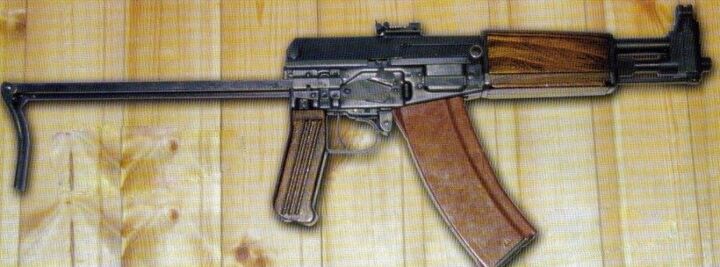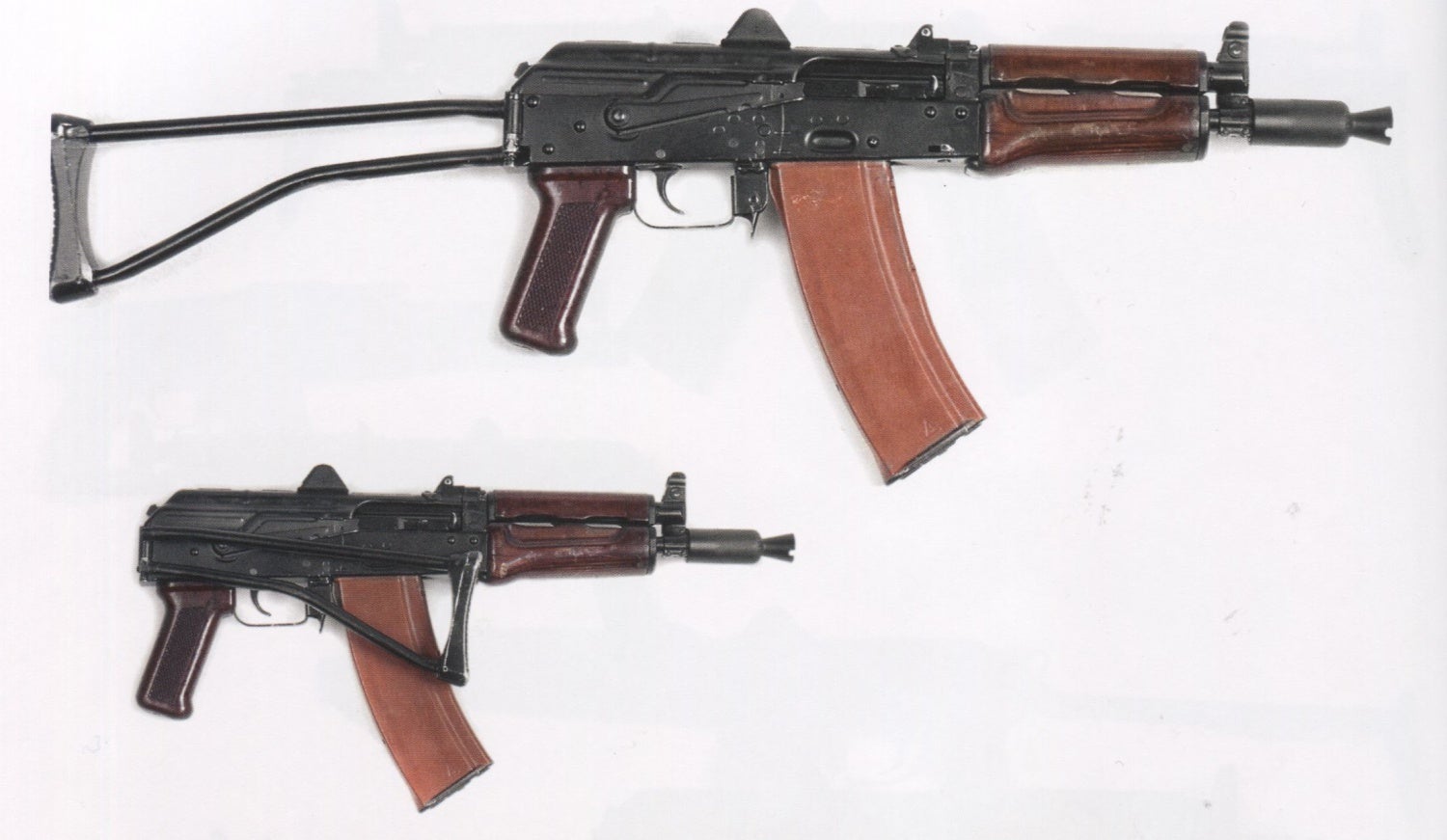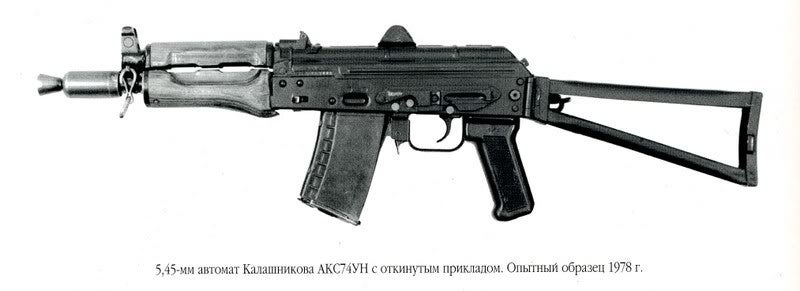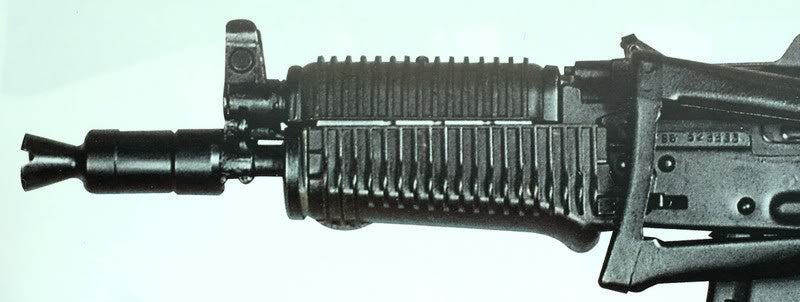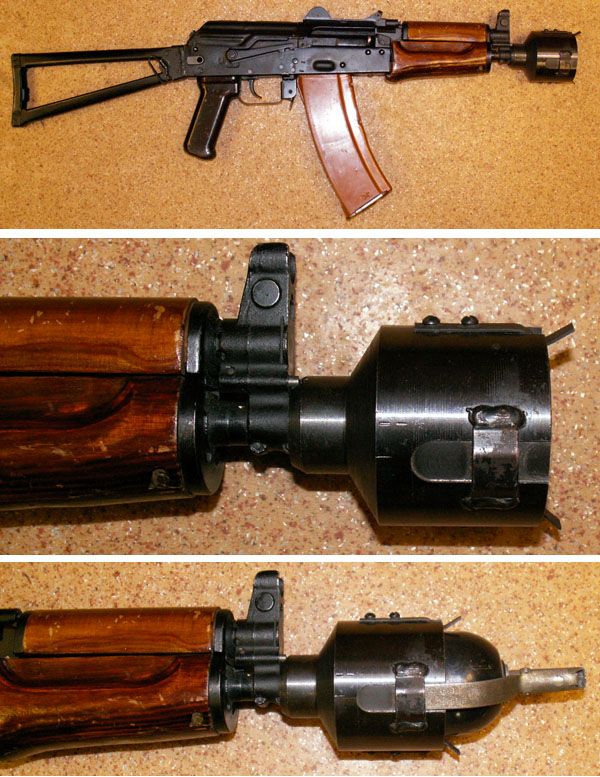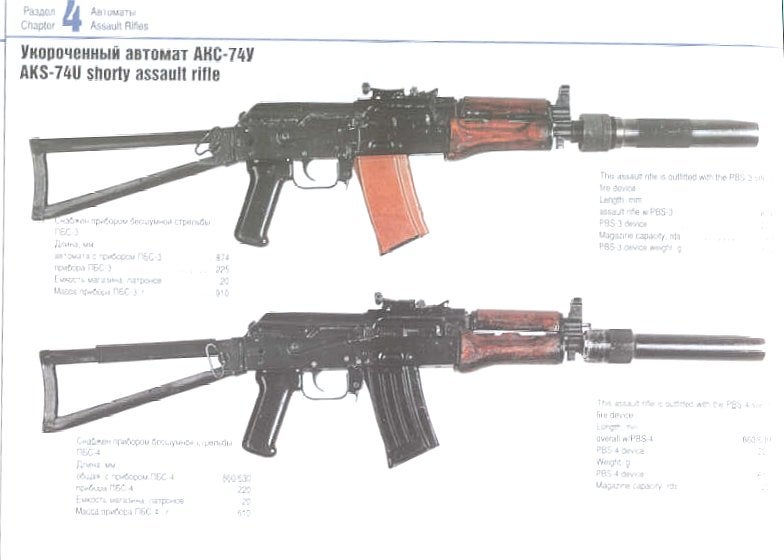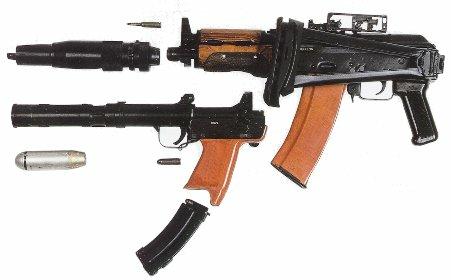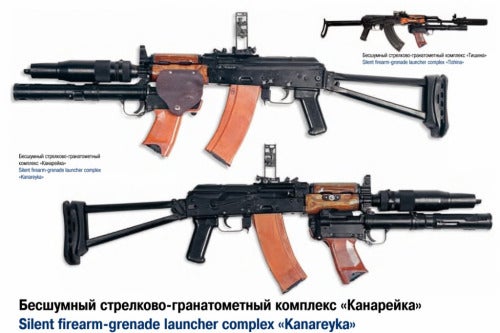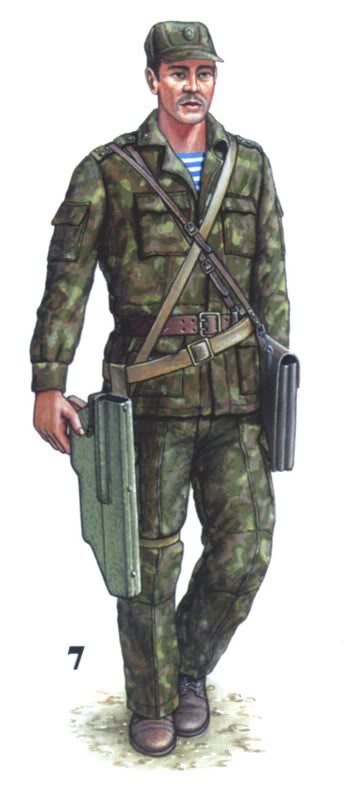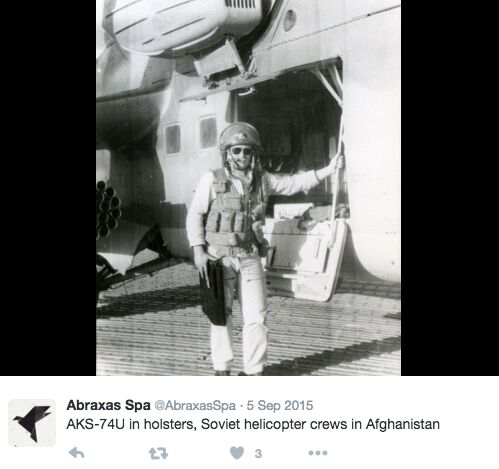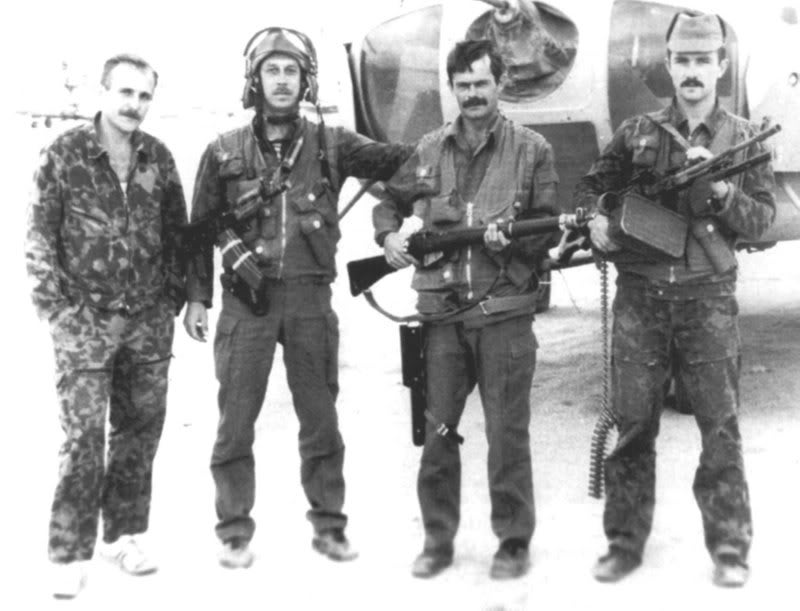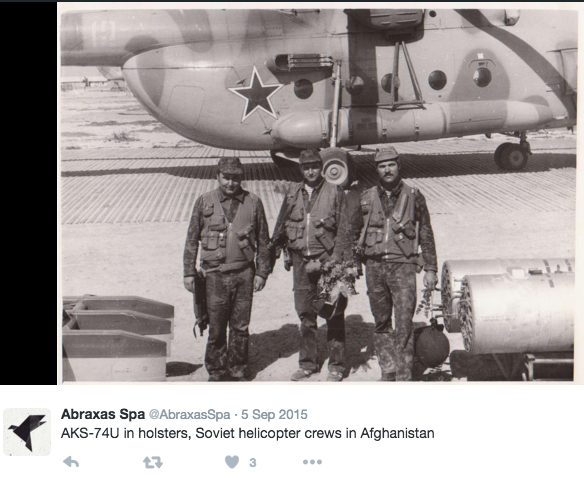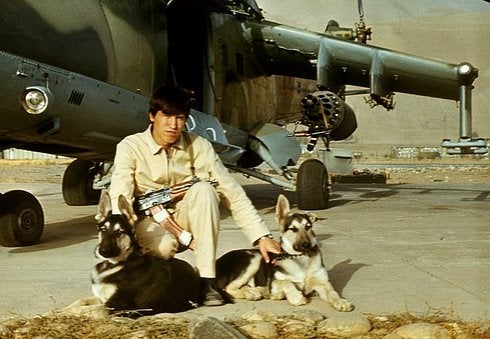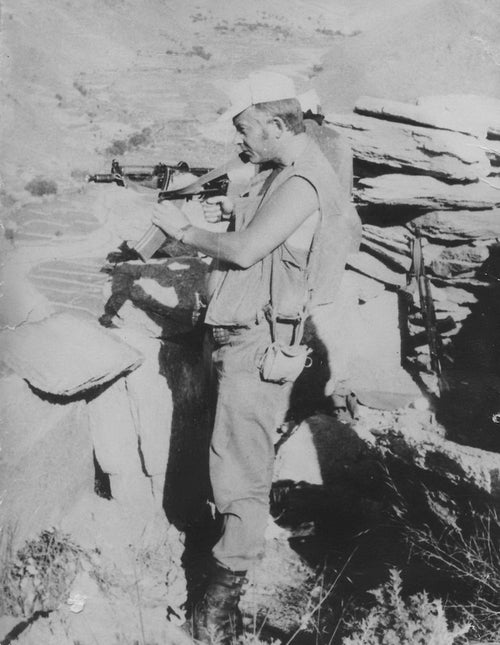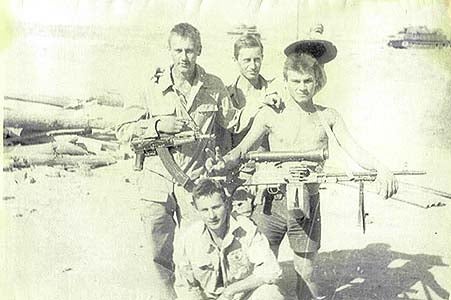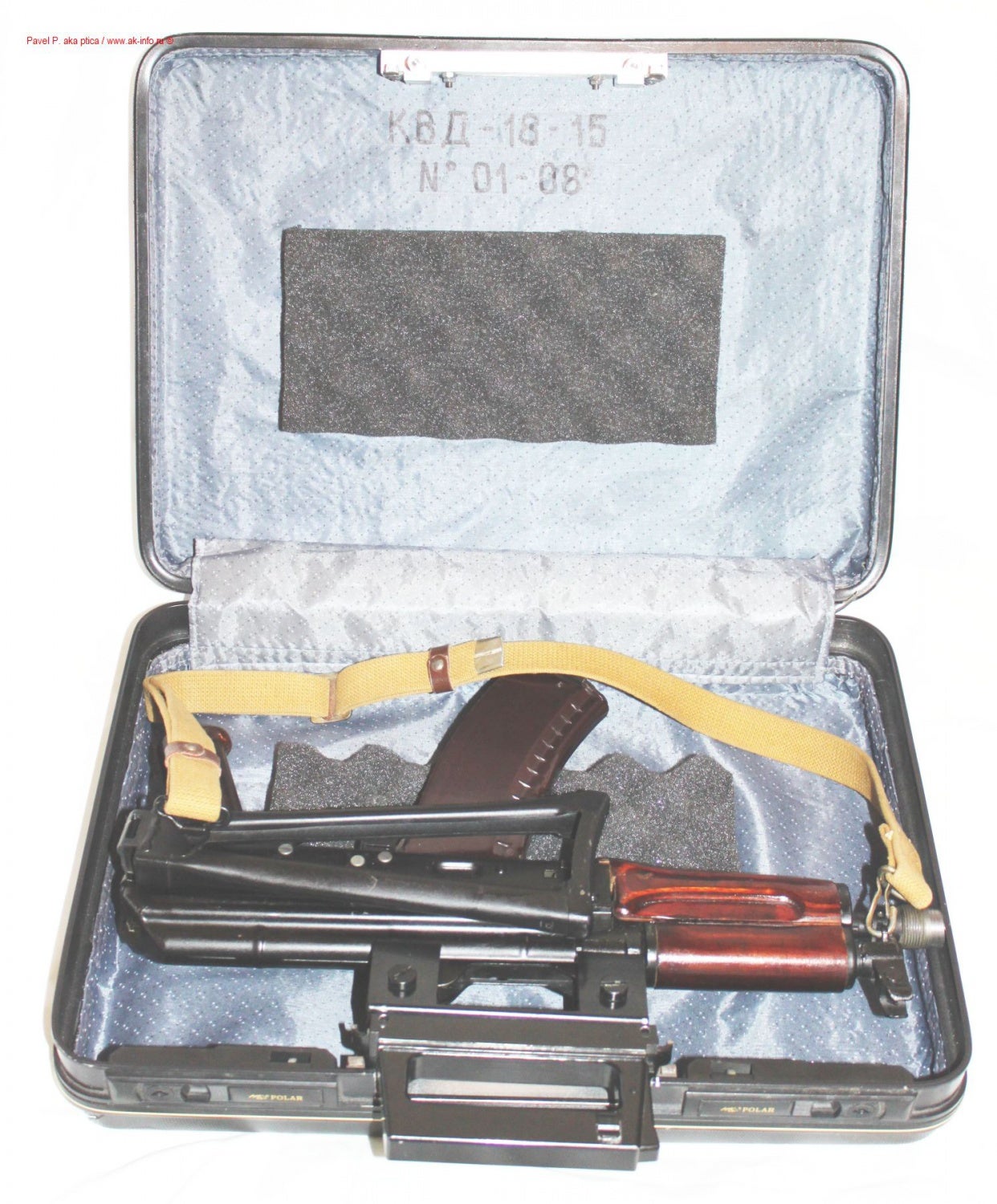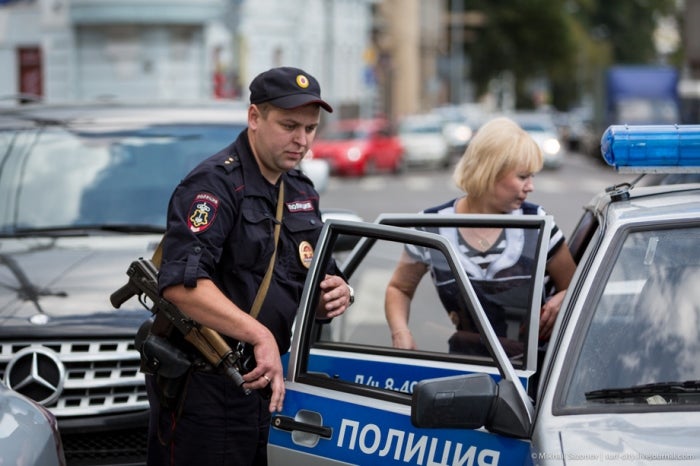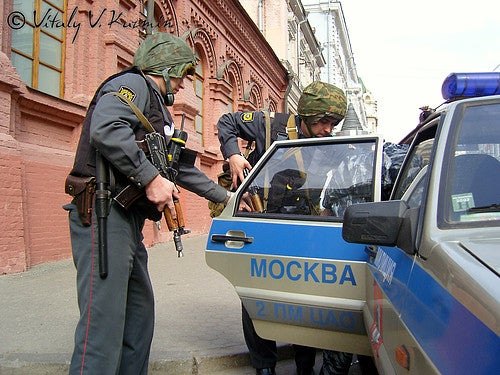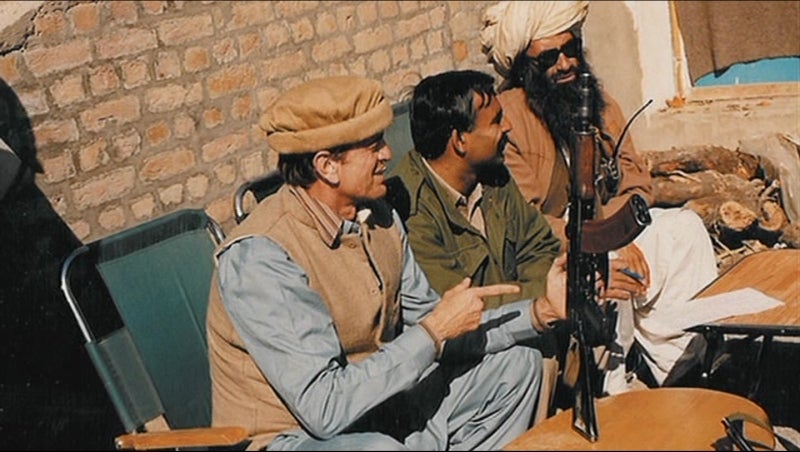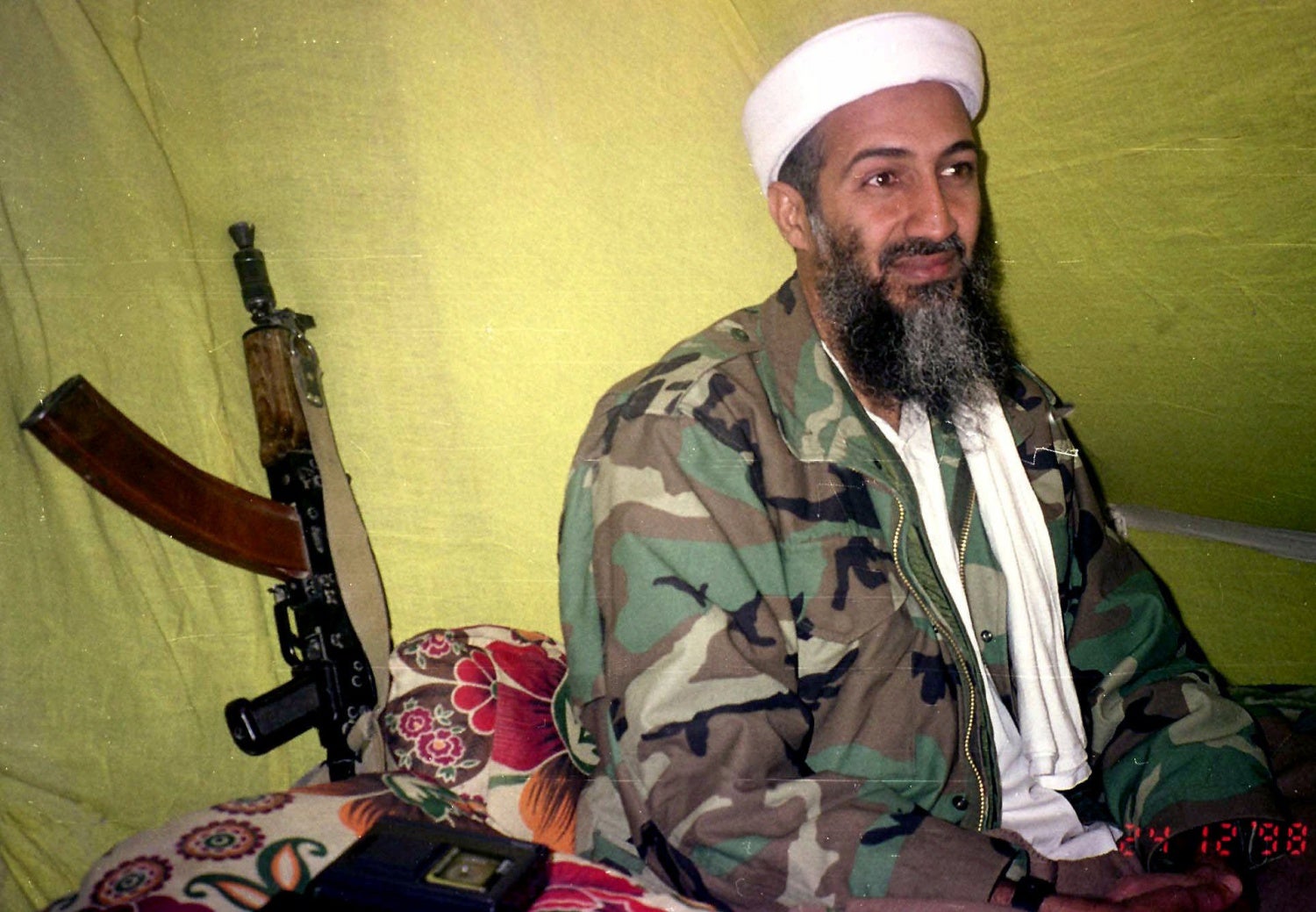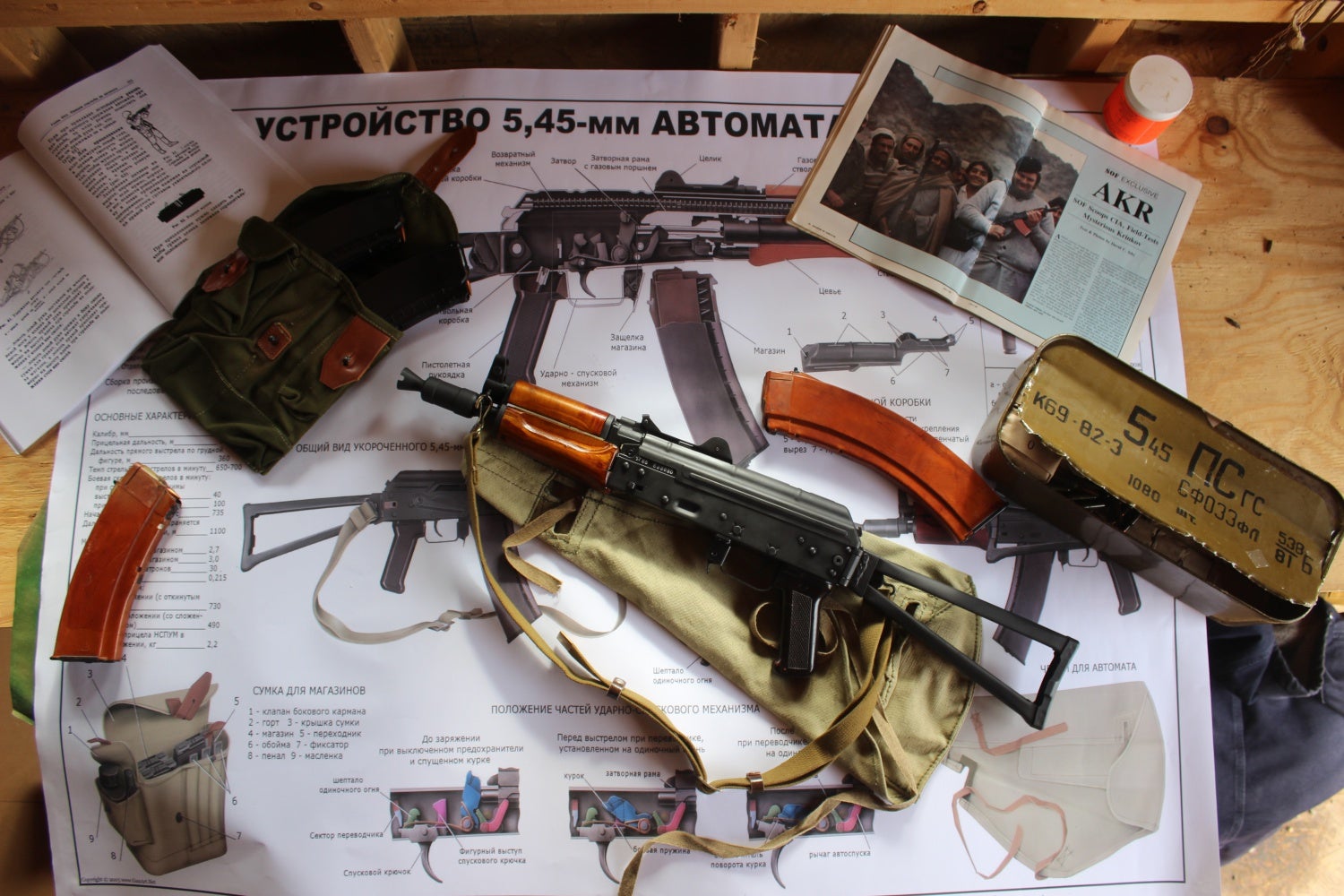Earlier on TFB we covered the origins of the name Krinkov, and the fascinating etymology of the word from Afghan Mujahdeen fighters, to the gun markets of Dharra, and then on to how we use it today via “Krink”. In this piece, we’ll look at some of the finer operational details of the original Russian design, through experimentation, use, and some of the variants that came into play.
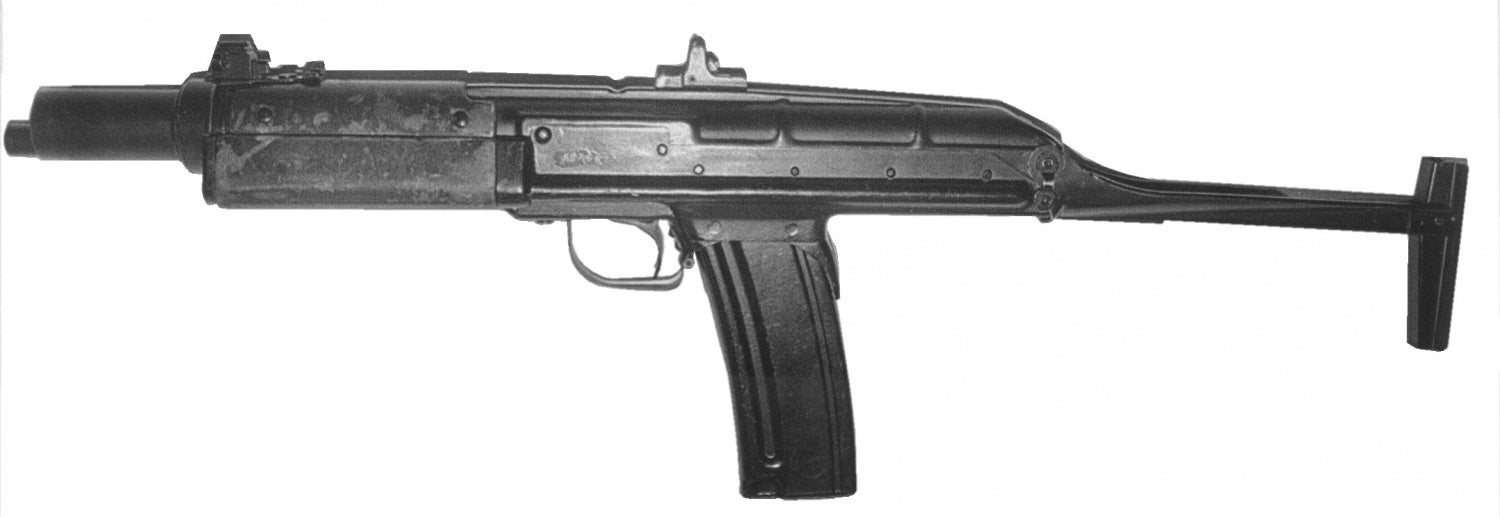
The original design by Tkachev. Courtesy Maxim Popenker, “History of Russian avtomat” by S.Monetchikov.
To start things off, the development of the AKS74U almost ran concurrent with development of the AK74 service rifle, and the concept for an extremely compact submachine gun firing an intermediate cartridge was actually put into place before the 5.45x39mm round ever came into the picture. A Russian small arms designer by the name of Peter Andreevich Tkachev developed an Uzi like compact assault rifle, based around the round that the 5.45 was based on, the 5.6x39mm cartridge. The compact assault rifle had a magazine as the pistol grip itself, behind the trigger. The folding stock was meant to fold on top of the weapon, while there were wooden handguards wrapped around the barrel. This was in the 1960s and early 70s, wherein the concept was there, but a reliable firearm and cartridge wasn’t. It was called the AO-46, and never moved past the experimental stage.

One of Kalashnikov’s earlier designs. Courtesy Maxim Popenker, “History of Russian avtomat” by S.Monetchikov.
In 1973 when development of the AK74 was really taking off, the project was given new life, under a project that was code named “Modern”, headed by the Ministry of Defence Industry and Main Missile and Artillery Directorate (GRAU). The intention was to create a submachine gun that specialists within the infantry could use to compliment their primary weapon system. RPG gunners, vehicle crews for example. It was also conceived as a special purpose weapon for the Russian Special Forces, the Spetsnaz. One of the stipulations was that the weapon could not protrude outside of the width of a full packed soldier while in the field.
The project called for various design bureaus in the Soviet Union to submit their designs for testing. A number of very prominent designers came up with prototypes, Stechkin, Dragunov, Simonov, and of course Kalashnikov. Bear in mind that all these designers headed up a team of engineers that would actually work on the details of the weapon system. The final prototype would come from their overall command. Similar to how Eugene Stoner perfected the AR15 while under the leadership of George Sullivan back in the 1960s.
The ultimate winner in the experimental trials was from the Kalashnikov bureau. Kalashnikov’s design relied heavily on parts from the then current production of the AKS74, the new service rifle in Soviet service. Further work progressed on the design under the leadership of a certain S.N. Furman at the Izhevsk arms factory. The largest problem that all of the experimental prototypes had, to include the winning Kalashnikov one, was the muzzle device. Working with a barrel already shortened to around 8 inches and having to cut down the gas piston, many of the designs had issues trapping enough gas to work the action of the submachine guns piston gas system reliably enough. Thus, a sort of gas expansion chamber was fitted, and this is the bulbous muzzle device that the AKSU is so easily identified by. The problem of the muzzle device wasn’t actually solved until around 1982, when the threads and internal design of the muzzle device were altered due to problems found with excessive use of the AKSU in Afghanistan. One of the other alterations made to the design was increasing the rifling twist from the original AK74 twist rate. This was to increase stability but nowadays it is one of the biggest downfalls of rebuilding these weapons, because people try to work with standard AK74 barrels and it just doesn’t work.

One of Kalashnikov’s earlier designs. Courtesy Maxim Popenker, “History of Russian avtomat” by S.Monetchikov.
Work progressed, and in 1976 the first field trials were held in the town of Kirovabad, today known as Ganja in modern day Azerbaijan, just north of the Iran, and east of Turkey (the town changed its name back to Ganja in 1989, as the Soviet Union was crumbling). The tests were with a Soviet motorized Infantry division, and an Airborne division. The military district this occurred in was the Transcaucasian Military District in Azerbaijan, and another source states that trials might have continued until March of 1977. Finally, in 1979, the prototype was officially adopted as the “5,45-ммАВТОМАТЫ
КАЛАШНИКОВААК74”, with the formal abbreviation as “AKC74U”, the U standing for “Ukorochennyj”. Essentially it means, “The short AK74, that is further shortened”. The GRAU code for the gun, which is similar to the NSN number in the United States, was “— 6P26”. Manufacture initially began at the Izhevsk arms factory, where then current production of the AK74, and AKS74 was taking place. However, production was later moved to the Tula arms factory in late 1981 or early 1982. Examples made at Izhevsk are extremely rare today and are mostly in museums. Current parts builds in the U.S. are for the most part all Tula parts kit imports, and most are from 1986 or onwards.
As mentioned previously, one of the design concepts for the AKSU was to be a primary weapon system of the Spetsnaz. The Soviet designers had an absolute ball with this process and put everything from an M203 like suppressed grenade launcher underneath the handguards, to actual suppressors and different variants of infared night sights that are absolutely massive. The early suppressor design was extremely bulbous, while later on the design changed to a standard AK74 design that was much more straight lined in comparison of profiles. However, herein lies one of the biggest conundrums of small arms design, and that is the working gap of knowledge between the actual designers and the actual end users. The Spetsnaz took a look at the AKSU and actually wanted nothing to do with it. The inherent inaccuracy past 100 meters, and the overheating of the short handguards, combined with the large muzzle flash made it a poor combat rifle at the distances that the Spetsnaz were using it with. Primarily this was in Afghanistan, as the Soviet Union’s 40th Army “invaded” Afghanistan at the tail end of 1979, to help the fledging Communist Afghan government stay in power. Many of the distances that the Soviets found themselves fighting in, were extremely vast. Open deserts, mountain valleys, and other terrain that the full length AK74 was barely able to withstand itself in a fight. I posted this in my earlier AKSU piece, but this is a transcript from an interview I conducted with Marco Vorbriev, a former Spetsnaz veteran of the Afghan war-
Well its alot of fun. Lets talk about it from a far away point here. The gun is a tool in a toolbox to complete a certain job. And the job could be a regular contact fight, lets say 500-400 meters, to include maybe clearing houses or compounds. So from that regard you want something small, maybe be able to use it in close quarter combat, something really, easy to handle, easy to maintain. Well that is fine, considering if you are a police officer going through a house. It shoot 5.45 as well, so thats good for wounding. On the other hand, as a carbine, you need to be able to hit targets out to 300 meters. You can do that with an AKS74, no problem, even with an M4. But the AKSU? You might if you spray half a magazine in that particular direction. But I even have one, I shoot it for fun, I get a big old smile on my face. It’s fun to shoot, it’s just like rrrrrrrrrrp, almost like a little toy so to speak. Mikal Kalshanikov himself told me that he loved it, although he was a very anti 5.45 guy, but he was a big fan of the AKSU for some reason. But you put yourself in an actual gunfight, with people screaming everywhere, trying to get comm up, you taste the metal of adrenaline in your mouth, and now you are trying to pick out targets in the distance… it’s really hard with that gun. We were always trying to get rid of it for the AKS74.
So who actually used it in the Afghan conflict? Also contrary to popular belief, the weapon didn’t make much of a presence with the Infantry specialities such as the RPG gunners, radio operators, the PKM gunners, or even the officers and NCOs. Looking through Soviet accounts, and especially photographs from that era, we see extremely little evidence to support that use. The terrain was just too massive to justify going to a secondary weapon system that could not hold its own in a gunfight, should the primary weapon system go down. However what we do is, is a wide issue of the AKSU among vehicle crews such as BMP and Mi8 (helicopters) personal that operated in the extremely confined spaces of their quarters. One of the more interesting developments of this issue was a plastic thigh holster that helicopter crews would house their AKSU in, with the magazine in a special pouch on their vest, just above the thigh holster. Unfortunately, none of these holsters have survived until today, or at least to the AKSU community in the United States.
Another tidbit that we see the AKSU in use, is the addition of magazines taped together, or inserting a 45 round magazine originally designed for the RPK74. This shows the AKSU as an extreme Personal Defense Weapon, and as a PDW, the weapon really does shine. We see this usage among those vehicle and helicopter crews and it makes sense. If these Soviet soldiers had to ever use their AKSU, it would be because the Mujahadeen would have been overrunning their vehicles, or surrounding it to the point that they couldn’t use the vehicles weapon systems. Or in the case of a downed helicopter where the Mujahdeen would have been trying to get on top of the helicopter as fast as possible, to strip it of its weapons. In both of these instances, the soldiers would have needed as much firepower in as little time as possible, and thus would have benefited from two 30 or 45 round magazines taped together, or from a single 45 round magazine. A conventional soldier wouldn’t have benefitted from the additional weight on his rifle, especially in a firefight over several hundred meters. I can personally attest to this, due to my experiences in Afghanistan as an Infantry Marine. Double magazines seem to be a sound tactical idea, they exponentially decrease reloading speed. However, that is only tactically sound if you don’t have to lug the extra weight on the rifle around all day, while on patrol. Infantrymen will always be carrying their rifle around with them, while on patrol, walking around their base. If anything, frontline soldiers will be wanted to decrease weight from their rifle, instead of adding weight to it. But if the rifle sits in a vehicle all the time, then this added weight doesn’t really factor in at all, it isn’t being physically carried several kilometers a day. I found this out by going out on foot patrols, and immediately decoupled my magazines to lighten my load on the actual weapon.
The other use of the AKSU was by the KGB spy agency in the form of a suitcase gun, with the muzzle device taken off to make it fit. The rear sight was fitted with a proprietary handle that locked into the suitcase and then became the handle for the external portion of the case. To bring the gun into action, a KGB agent would simply press a button on the handle, which would eject the suitcase away from the gun, and the AKSU would be ready for action. This model was called the AKS74U VIP, and is apparently still in service with close protection elements of the Russian police.
With the close of the Soviet involvement in Afghanistan in 1989, and the fall of the Soviet Union in 1993, full production of the AKSU ceased in 1992 at the Tula arms factory. However, production continued into 1993, and even into the 2000s for the European civilian market. A number of semi automatic only versions were made, in addition to a large number of deactivated AKSUs, the sale of which are very popular in the United Kingdom.
But this wasn’t the end of operational use of the AKSU. The carbine continued to serve on, and we have a number of examples of this in Russian involvement in Chechnya. Outside of the military, as older models were phased out, a number of AKSUs found their way into the Russian Law Enforcement sector, where we continue to see them in service today. Tactical Life as an excellent description of how it is used in that capacity-
When I was in Russia almost 15 years ago, I had contact with some Russian special police units. One thing I quickly noticed was that you could tell how hardcore the police units were by whether they had 5.45x39mm AKS-74Us. The standard militia (police) weapon at that time was the Makarov PM. Those assigned to traffic duty, static posts and other relatively low-threat assignments carried a Makarov in the standard holster with one spare magazine on their belt. Often, I did not see anything else on the belt—no handcuff case or anything else for that matter. The patrol officers with whom I had contact worked high-crime areas or anti-organized-crime patrols. They also had Makarovs but were augmented by AKS-74Us, much as U.S. patrol officers carry a shotgun or carbine to deal with armed felons.
Some of the notable personalities that have had the AKSU attached to them are Osama bin Laden and the congressman Charlie Wilson. Bin Laden always had his AKSU with him as a status symbol, because in modern day Peshawar and Afghanistan the weapon is seen as elevated status. Even during the Communist regime, the Soviets would occasionally gift the submachine gun to leaders and high ranking Afghan Communist Party members. Charlie Wilson was gifted it during his visits to Peshawar to help fund the Mujadeen in their fight against the Soviets. In fact the example he brought back to the United States with special ATF permission, is perhaps the only fully original and functioning as an automatic AKSU in civilian hands, not a rebuilt parts kits.
These days, a number of gunowners are interested in rebuilding the AKS74U from various parts kits that have been imported into the United States from Russia. The overwhelming majority of these kits are Tula manufactured submachine guns that have been cut in various places to deactivate them. Usually what is needed to put them back together are receivers, barrels, and an American trigger group to make them 9.22 compliant. We’ll be focusing on this entire process in the next installment of the AKSU article series.
 Your Privacy Choices
Your Privacy Choices


